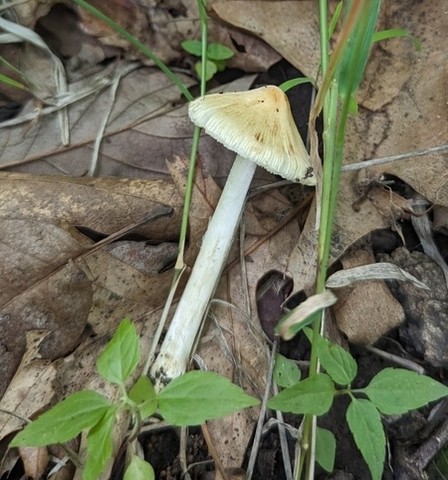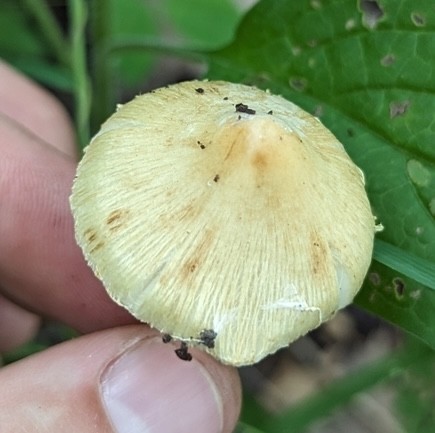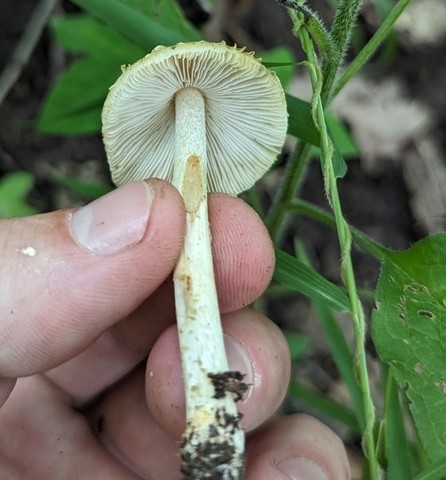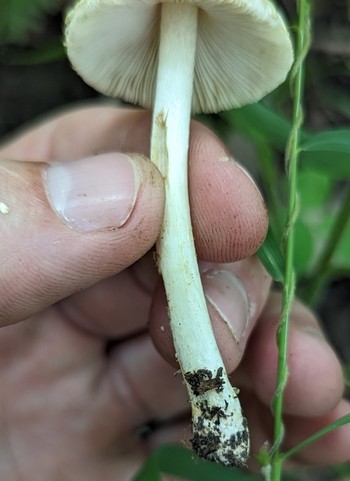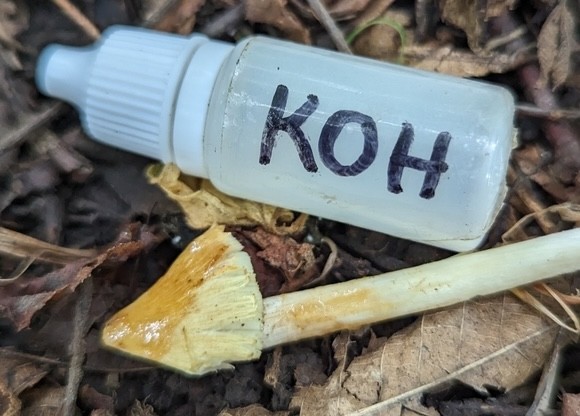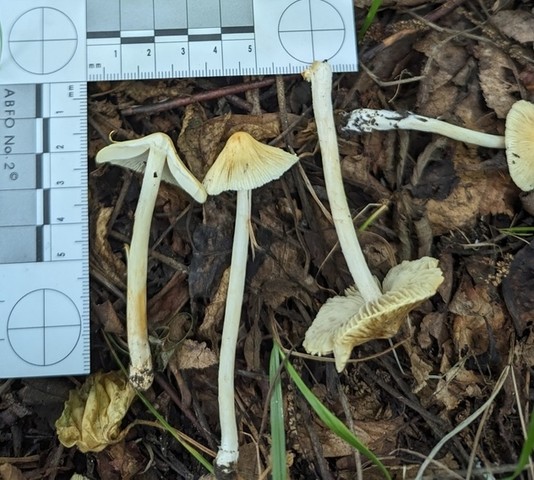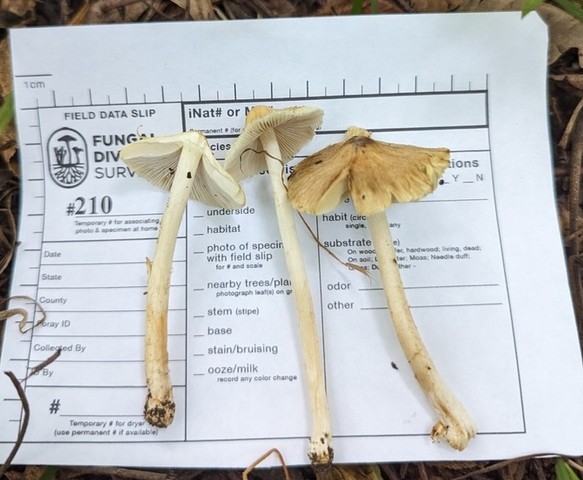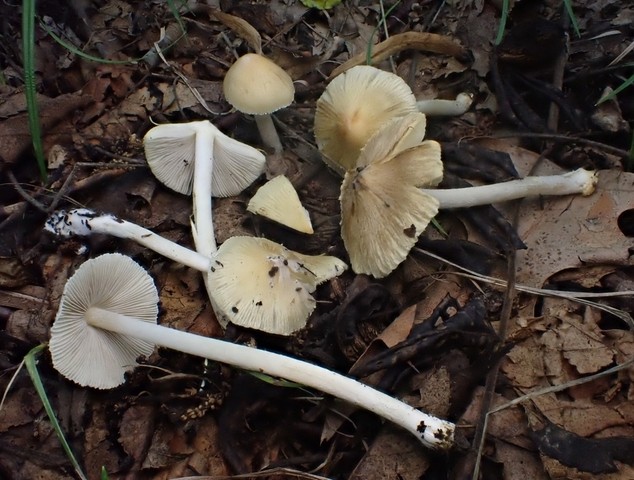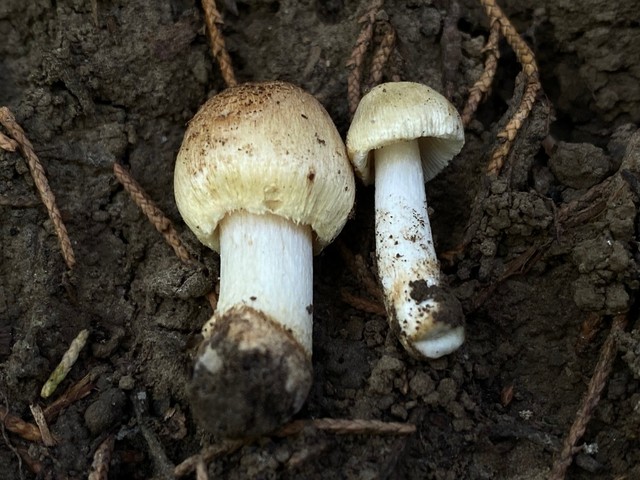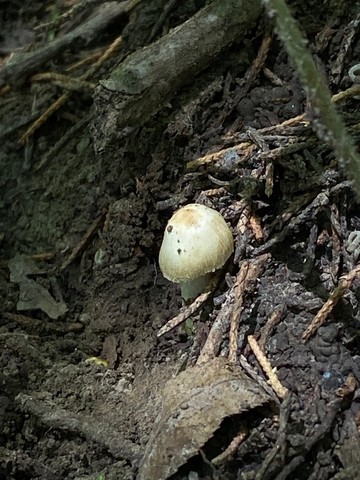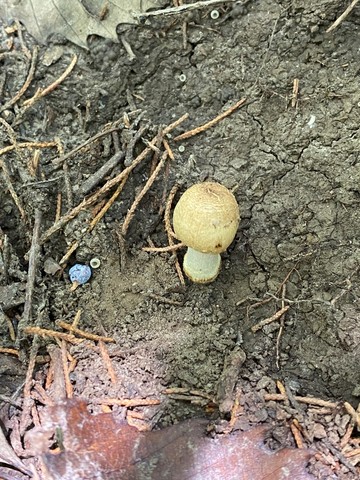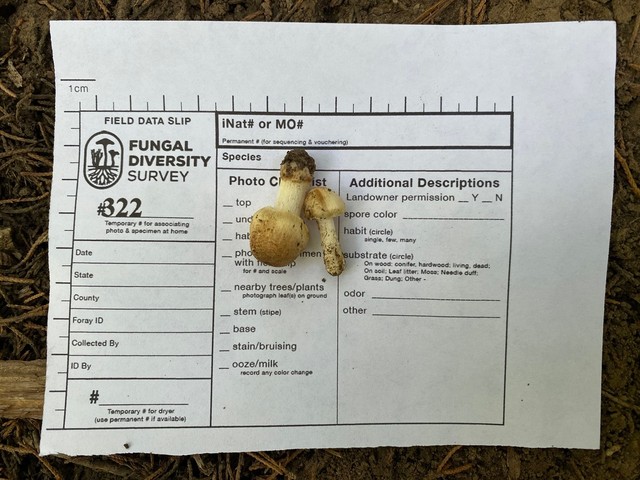Inocybe sp-IN19
Life > Fungi > Basidiomycota > Agaricomycotina > Agaricomycetes > Agaricomycetidae > Agaricales > Agaricineae > Inocybaceae > Inocybe
2024 DNA results of Inocybe sp-IN19 represent it as an undescribed species originally found in Indiana.
Members of these genus are known to be toxic. The toxin in question called muscarine. Please review the list of symptoms below.
The symptoms usually occur within 15-30 minutes of ingestion, and are focused on the involuntary nervous system. They include excessive salivation, sweating, tears, lactation (in pregnant women), plus severe vomiting and diarrhea. These symptoms may be accompanied by visual disturbances, irregular pulse, decreased blood pressure, and difficulty breathing. Victims normally recover within 24 hours, but severe cases may result in death due to respiratory failure. Atropine is a specific antidote, but must be administered by a physician. Dogs are particularly susceptible to the toxin muscarine. (Michael, 2024)
If you or someone you know has been poisoned by consuming wild mushrooms, call 9-1-1 and get the individual medical attention IMMEDIATELY. Afterwards, please report poisonings to the North American Mycological Association to contribute to our understanding of wild mushroom safety.
July 17th, 2023 Field Notes - Indian Cave State Park
- Growing on mixed oak/hickory woodland ridge.
- Nearby Trees: Bitternut Hickory, American Hophornbeam, Black Walnut, Black Oak, Bur Oak, distant Ash, and Chinkapin Oak.
- Cap cone-shaped with fibers splitting apart near the margin.
- Gills marginate. Edges white while the faces are light tan, not attached to stipe.
- Smell: Not distinctive.
- Taste: Not distinctive.
- KOH: Orange on cap.
August 17th, 2023 Field Notes - Indian Cave State Park
Growing beneath eastern red cedar in mixed oak/hickory woodland. South-facing slope.
Nearby Trees: Eastern Red Cedar, Chinkapin Oak, Red Mulberry, Bitternut Hickory.
- Fibrillose cap and stipe
References
Beug, M. (2024, April 23). Mushroom Poisoning Syndromes - North American Mycological Association. North American Mycological Association. https://namyco.org/interests/toxicology/mushroom-poisoning-syndromes/#muscarine
